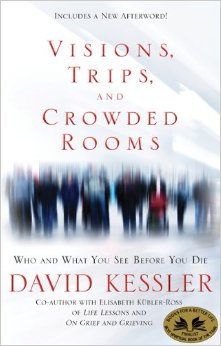When a person nears the end of life, many changes occur physically as well as spiritually and mentally.
For many, dying manifests through deathbed visions, in which a person “sees” the manifestations of deceased relative/s coming to greet the person and lead that person through “death” to something beyond. David Kessler wrote a book called Visions, Trips and Crowded Rooms: Who and What You See Before You Die, in which he presents multiple anecdotes describing these visions.
The book begins by going through a general discussion of the spiritual and legal aspects of deathbed visions. Interestingly, deathbed statements are admissible in American courts as an exception to hearsay, so long as the person speaking truly believes he/she is dying. After these overviews, Kessler focuses on three types of deathbed visions:
1. General Visions of a loved one/s returning, including stories about
seeing those who recently died before the person could have known about the
death. This category also includes spiritual visions of angels, including a
story about the Angel of Death, in which the person sharing the story indicated
that her perception of the Angel of Death had changed to recognizing that this
angel must be G-d’s most important servant, carrying out a very delicate
event.
2. Trips: Many dying people describe death as a trip, without overtly
equating the two. The trip will sound physically based but it never contains a
person saying something similar to, “I am travelling to my death.”
3. Crowded rooms: People’s deaths are often attended by multiple visitors,
not just family. The room becomes “full” as an entourage has come to escort the
deceased.
While all this might sound strange to those unfamiliar with being around the dying, I can only share that I have experienced these with the dying and something very “real” is occuring. Additionally, I have often shared with families that the dying process is like a door opening. If a door opens, things can come in and out of the door. As such, the dying are able to experience these visions because the door is no longer closed. It is the merging of our current physical reality with something beyond. While we can suggest that the visions are only as they are due to one’s subconscious doesn’t take away from the event. A person might very well see the physical manifestations of loved ones because of how we physically perceive the world, yet what is really being seen is something beyond our ability to describe.
Overall, for those who work in the field or who have had family members experience visions when dying, this book will be of interest. Professionally, anecdotal works are able to frame the experiences we have. Personally, if we know others have similar experiences, then perhaps they are not as easily dismissible.
Review by: Rabbi Bryan Kinzbrunner

Credit: Hay House; Reprint edition (May 1, 2011)
